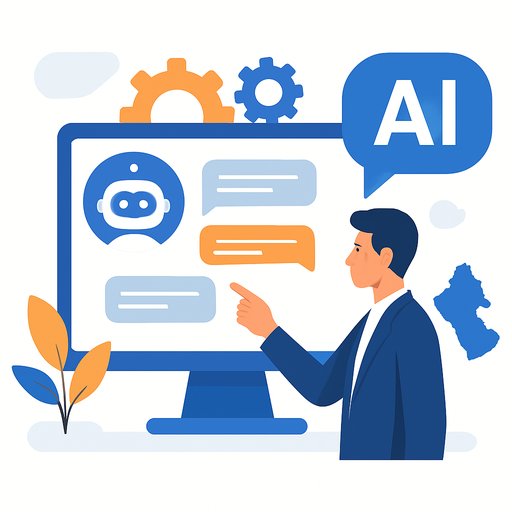AI chatbots fall short on complex tasks - here's the support model that actually works
Chatbots do well on straightforward requests. They stumble on anything messy, emotional or high-stakes. Bain & Company's data backs this up: for basic tasks like transfers, digital scores land around 49-72 while humans sit at 44-54. On complex issues like disputes, digital drops to 31-53 while humans rise to 44-63.
The fix isn't "more bot." It's smarter routing. Let bots handle the simple stuff and escalate the rest to AI-supported human agents. That's how you improve outcomes, loyalty and efficiency without burning trust.
What the data says
Customers accept hard answers from a person more than from a bot. Even if the outcome is the same, people move on faster after a human conversation. The biggest complaint with AI support today is the struggle to explain the issue, and fewer than 40% of consumers feel confident using AI self-service.
Source context: see Bain & Company research and CCW Digital.
Let bots handle these tasks
- Balance and status checks, order tracking, delivery updates
- Simple transfers, password resets, address or contact changes
- FAQs, policy lookups, appointment scheduling, basic cancellations
- Form prefill and data collection before an agent handoff
Escalate these to AI-supported human agents
- Disputed charges, fraud concerns, billing errors, chargebacks
- Account lockouts with identity nuances, regulatory or compliance questions
- Multi-step failures, edge cases, vulnerable customer situations
- Any issue with financial, legal or emotional risk
Routing rules that reduce friction
- Trigger handoff on signals: repeat contacts in 7 days, "dispute" or "fraud" keywords, negative sentiment, high transaction value
- Escalate when the bot's confidence score is low or the user asks for a human once
- Set guardrails: if no progress in 120 seconds or 3 failed intents, route to an agent
- Offer "talk to a person" up front for complex categories; do not bury the option
How AI should support your agents
- Instant context: pull customer history, summarize the bot transcript and surface likely intents
- Knowledge assist: retrieve articles, policy highlights and similar cases with citations
- Drafting: propose replies, dispute summaries and follow-up emails for agent review
- Workflow help: auto-complete forms, disposition codes and case notes
- Quality checks: flag risky language, missing steps and compliance issues
Conversation design that earns trust
- Start with precise intent capture; confirm in plain language
- Display the path: what the bot can do now and when a person will join
- Pass the full transcript and context to agents so customers never repeat themselves
- Offer queue transparency and callback options during peak times
Metrics that matter
- Resolution by complexity: simple vs. complex, bot vs. human
- Deflection on simple tasks without repeat contacts within 7 days
- CSAT/NPS gap between bot and human for each episode type
- First Contact Resolution and Average Handle Time segmented by channel
- Escalation rate, abandonment rate, and customer effort score
- Customer acceptance of outcomes from bots vs. humans (post-outcome survey)
90-day rollout plan
- Weeks 1-2: Map top customer episodes, tag simple vs. complex, collect baseline metrics
- Weeks 3-4: Improve knowledge articles, write bot intents and guardrails, define escalation criteria
- Weeks 5-6: Implement routing, transcript pass-through and agent assist in one priority queue
- Weeks 7-8: Pilot with daily reviews of failures, adjust intents and rules
- Weeks 9-10: Train agents on AI assist, launch QA feedback loops
- Weeks 11-12: Expand to more episodes, set targets for deflection and acceptance
Common pitfalls
- Forcing bots into complex conversations customers won't accept
- Hiding human support paths or looping customers through dead ends
- Measuring deflection without tracking recontacts and effort
- Launching AI without upgrading knowledge quality and article findability
Bottom line
Use bots for speed on simple tasks. Use humans, supported by AI, for everything that carries risk or emotion. Map each episode, match the channel to the need and measure acceptance, not just deflection. That's the path to better outcomes and stronger loyalty.
If you're upskilling your team on AI-assisted support, explore practical courses at Complete AI Training.
Your membership also unlocks:






